
• Colliding Rivers is the only place in the US where a rare colliding phenomenon occurs
• The best times to see the violent force of wild rivers smashing into each other are when runoff is high
Colliding Rivers is a unique geologic spectacle located along Highway 138, also known as the scenic Umpqua River Byway, in the town of Glide, 12 miles northeast of Roseburg. Little River and North Umpqua flow towards each other from the south and the north and collide head-on in a basalt pool. After the rivers collide, both of them change their course and flow to the west towards the Pacific Ocean. Stop at this site to see the only place in the United States where a rare colliding phenomenon occurs.
Millions of years ago, the place where two rivers meet was the Pacific Ocean. The collision erodes the ancient sea bed exposing seashells, shale, silica, coal, and conglomerate.
This site experienced several floods. One of them happened in 1955, when the North Umpqua River pushed the Little River as far as 100 yards back.
During the flood of 1964, the interpretive sign you can see at the viewpoint would be as much as under five feet of floodwater. This flood happened because the heavy snowfall was followed by the warm heavy rain significantly raising the water level in the both rivers and flooding the area.
The best times to see the violent force of wild rivers smashing into each other are winter and spring when runoff is high. The more powerful Umpqua can push the Little River a few yards back.
The summer months when river flows are low are the best time for swimming, diving, wading, fishing, and rock collecting. The water of the Little River is warmer and slower than the Umpqua. Located west of the bridge and the viewpoint site, a pebble beach, underwater ledges, shallow and deep spots – all of those offer great opportunities to enjoy summer activities.
Swimming
The swimming spot on the Little River upstream of the bridge features a bedrock with a low water level where you can walk and sit to cool down during the hot summer day. The bedrock abruptly ends creating a depth big enough to enjoy swimming.
This swimming spot is calm and safe only during summer when the water is warmer and the rivers are calmer. During other seasons river currents are very powerful and will easily drag you to the Umpqua River.
Rockhounding
The Colliding Rivers Site is also great for some riverbank rockhounding. The most common minerals you can find here for your collection are agate, jasper, and petrified wood.
In order to get there, take the trail to the left of the bridge if you are overlooking the Colliding Rivers Site.
Wolf Creek Falls | Facts
Open: Year-round
Managed by: BLM
Amenities: None
Activities: Hiking, nature viewing, swimming, rockhounding
Accommodations: Campgrounds along Little River Road
Distance from the parking: Short
Road access: Any passenger vehicle
Day-use fees: Free
Elevation: 530 ft (162 m)
Colliding Rivers Viewpoint is located:
- 16 miles northeast of Roseburg
- 83 miles southeast of Eugene.
Adventures Nearby
Directions to Colliding Rivers Viewpoint
From I-5,
- Take exit 125 in Roseburg for Garden Valley Boulevard and travel 1.9 miles east to Wright Avenue
- Turn right and then left onto Winchester Street and continue 0.2 miles to Highway 138 (North Umpqua Highway)
- Turn left onto Highway 138 and head 16 miles east to the destination.




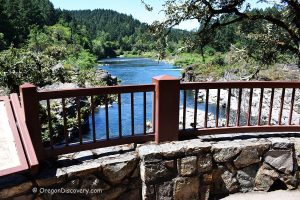

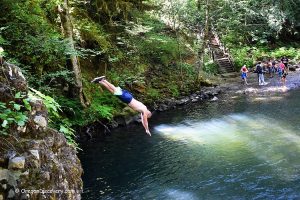
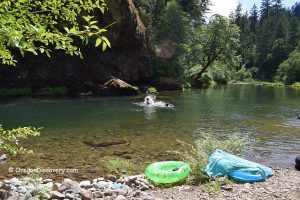
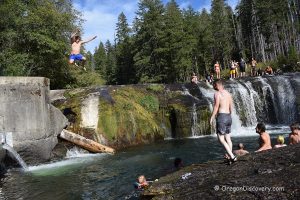
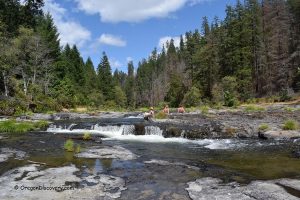

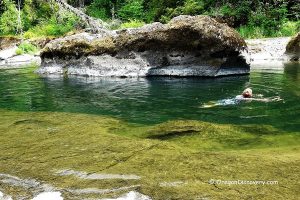
Can you tell me please when the salmon are leaping I have been there many years around my birthday July 25th and sometimes that’s a little too late?
I believe it happens at the beginning of December.